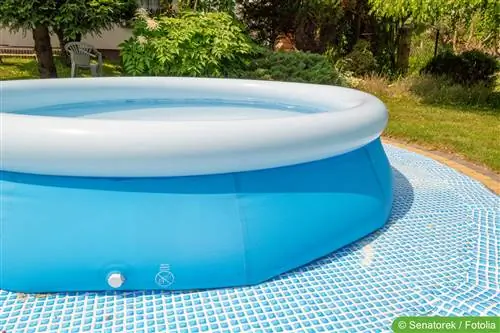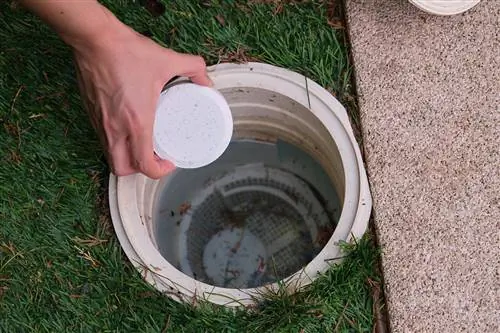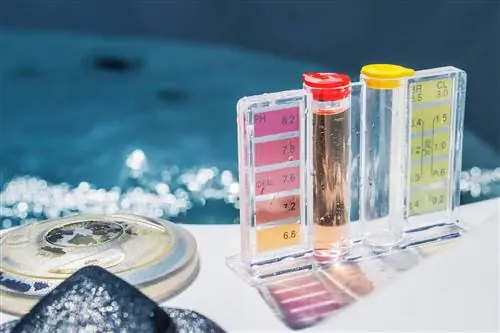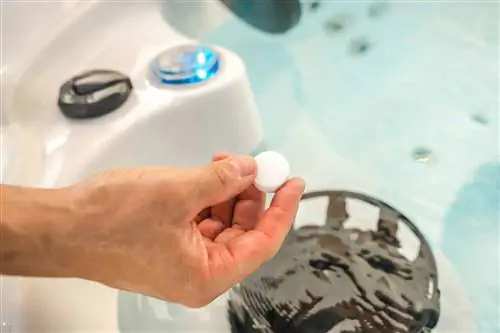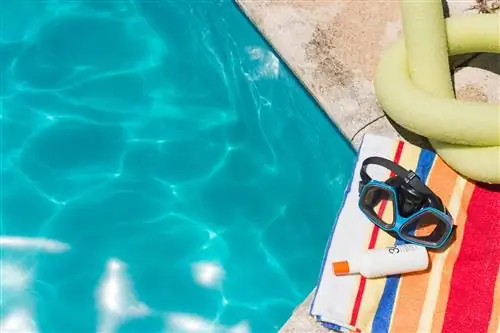- Author admin [email protected].
- Public 2023-12-17 03:39.
- Last modified 2025-01-24 12:45.
If too much chlorine accidentally ends up in the pool or the chlorine value is inexplicably high, several measures are possible. This guide shows what can provide quick and lasting relief and reduce chlorine levels.
Check pH value
Chlorine can only work as a disinfectant if the water has the correct pH value. This should therefore be checked regularly and adjusted if necessary. The optimal value is between 7.0 and 7.4. Outside this range, the effectiveness of the chlorine drops to a fraction and it is not broken down. This means the salary remains high.
Adjust dosage
An excessively high chlorine content in the pool water can be found in an incorrect calculation or dosage. The following points will help you find and fix such an error:
- Recalculate pool volume
- Consider manufacturer’s information
- Remove chlorine with long-term effects
- Consider temperature
- calculate usage
- Test chlorine content before further doses
Tip:
At low temperatures, low usage and when covered at night, the chlorine value remains in the upper range for a long time. If the agent used is too highly concentrated or dosed and is still dispensed continuously, this can lead to a worrying increase in the content. This means that the free chlorine adds up.
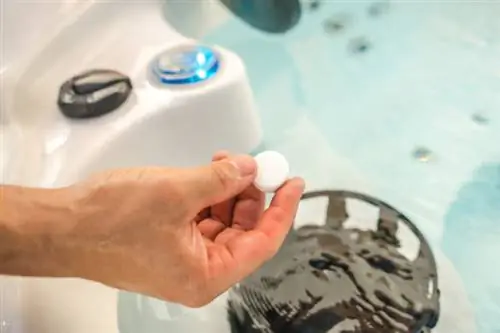
React and evaporate
Free chlorine is used when it disinfects the water - i.e. when it reacts with contamination. On the other hand, it can evaporate with appropriate ventilation and temperature. In addition, it is broken down by UV radiation. This makes it possible to reduce the chlorine content in a very simple and natural way.
- Leave cover
- Increase temperature if possible
- Use or allow UV radiation
- Continue using the pool
This means that the free chlorine reacts with the particles introduced and breaks down more quickly. It also disappears when there is sunlight and good ventilation as well as sufficiently high temperatures.
Tip:
You should only swim in the pool if the chlorine content is not dangerously high. Otherwise, significant irritation may occur.
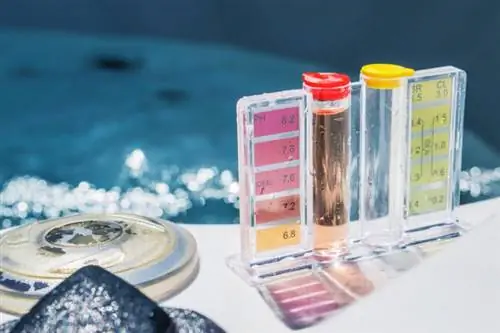
Neutralize chlorine
If the chlorine levels are very high, the pool should not be used for the time being. In the height of summer and without coverage, the salary usually drops on its own within a few days. If you don't want to wait that long, you can replace some of the water. However, this involves greater effort and represents a significant loss. The careful use of a neutralizer is also possible. It is still advisable to wait.
Frequently asked questions
When does the pool contain too much chlorine?
Values of 0.5 to 1.0 milligrams per liter are considered optimal in the private sector. If the chlorine content is above this, it is considered elevated. It becomes worrying at a level of 2 milligrams per liter or more. In this case you should refrain from using it for the time being.
What symptoms can too much chlorine cause?
Irritation of the skin, eyes, mucous membranes and respiratory tract are possible. Coughing, burning and rashes are typical consequences. At very high levels, chlorine poisoning is even possible.
How often should chlorine levels be tested?
A check should be carried out before and after each administration of chlorine and at least twice a week during use. This means that only as much chlorine has to be added as is absolutely necessary and there are neither overdoses nor dirt settling.

